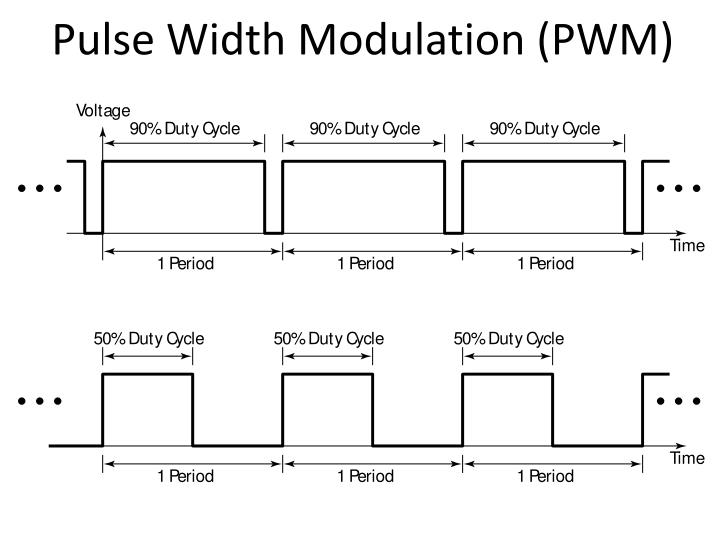In the 21st century, we use a lot of electronic appliances at homes, offices, shops, and everywhere else. Most of these appliances work with something called PWM – pulse-width modulation. Grossly, it is a method of reducing the average power delivered by an electrical signal, by segregating it into different parts.
In simpler words, PWM is a method for getting analogue results with digital means. Digital control is used to create a square wave, a signal switched between ON and OFF. The duration of the ON time is called the pulse width. If one is trying to obtain different analogue values, the pulse width, or ON time can be modulated or changed.
To the layman, these might seem like obscure concepts, but to people working with electronic appliances such as mechanics or manufacturers or engineers, or even researchers, these are quite common concepts with make up the heart and soul of the digital signal and its utilizations.
What Does Mean By Pulse-Width Modulation (PWM)?
As mentioned earlier, pulse-width modulation (PWM) or pulse-duration modulation (PDM) is the process of decreasing the average power of an electrical signal by effectively chopping it up into different parts. The average value of voltage (and current) fed to the load is controlled by turning the switch between supply and load on and off at a fast rate. The longer the switch is on compared to the off periods, the higher the total power supplied to the load. Along with maximum power point tracking (MPPT), it is one of the primary methods of reducing the output of solar panels to that which can be utilized by a battery. Along with maximum power tracking, it is one of the most prioritized methods of decreasing the output of solar panels to that which can be utilized by a battery.
The common uses of PWM can be found in the running of inertial loads such as motors, which are only negligibly influenced by the switching between ON and OFF, as their reactions are slow due to their inertia of rest. The rate or frequency at which the power supply must switch between can alter largely depending on application and load.
The Origin of PWM: A Brief History of Pulse-Width Modulation
Earlier, control in machines such as sewing machines was implemented by using a rheostat which was connected in series with the motor of the machine to control the flow of the current through the motor. It was not budget-friendly and the process of switching or adjusting the power was inefficient, taking up a lot of time as well. This mechanism is also required to be able to drive motors for fans, pumps, and robotic servos and is also required to be compact enough to interface with lamp dimmers. Thus, pulse-width modulation came as a much-needed solution to this problem.
In its early days, pulse-width modulation was used in AC motor control. The earliest application of PWM was in the Sinclair X10, a 10W audio amplifier that was available in the form of a kit in the mid-60s.
Explanation of the Mechanism of Pulse-Width Modulation
As mentioned before, pulse-width modulation speed control works by driving the motor with a series of “ON-OFF” pulses and varying the duty cycle, the fraction of time that the output voltage is “ON” compared to when it is “OFF”, of the impulses while keeping the frequency constant.
The power given to the motor can be modulated by changing the width of the applied pulses and therefore changing the width of the applied pulses and thus changing the average DC voltage applied to the motor terminals.
What are the various types of PWM?
In general, there are three types of PWM techniques, namely:
Lead Edge Modulation
In this method, the lead edge of the signal is fixed and the trailing edge is modulated.
Trail Edge Mountain
The lead edge of the signal is modulated keeping the trailing edge constantly.
Phase Correct PWM
The pulse center is constant and both the edges of the pulse are modulated.
All these processes are extensively used in commercial fields, according to the requirements.
General Usage of PWM in Our Daily Lives
In our daily lives, there are various applications of PWM. The most common use is adjusting the brightness of screens, drive a buzzer with varying loudness, control the speed of the motor, controlling the speed of a servo, provision an analogue output, generate an audio signal, ding messages in telecommunication. PWM can also be used in various ways on Arduino.
What are the advantages and disadvantages of PWM
Like any other technological process, PWM or pulse-width modulation has both its advantages and disadvantages. However, it is preferred over other similar processes as the advantages of PWM vastly outweigh the disadvantages. Also, so far, it has proven itself to be the best process of saving power and energy in electronic appliances. Let’s take a close look at some of the most well-known advantages and disadvantages of pulse-width modulation, which are worth mentioning.
Advantages of Pulse-Width Modulation
- It is very cheap to construct.
- It has a considerably high-power handling capacity.
- It produces very little heat while working.
- The noise interference is considerably low.
- The requirement for a viable filter is less.
- It can make use of very high frequency.
- A system in moderate inefficiency among all three types
- Significant reduction in total harmonic distortion of load current.
- Up to 90% efficient.
- A system in moderate inefficiency in all three types.
- A signal can be separated very easily at demodulation and noise can be also separated easily.
- It consumes considerably less power than other similar processes.
- Amplitude and frequency can be controlled fairly independently.
- Synchronization between the transmitter and the receiver is not required, unlike the process of pulse position modulation (PPM).
Grossly, these are the advantages of pulse-width modulation which are worth a mention.
Disadvantages of Pulse-Width Modulation
- It is a complex circuit with a fairly complex process of working.
- There are frequent voltage spikes.
- There is electromagnetic noise.
- The issue of radiofrequency interference.
- High PWM frequency causes loss of high switching.
- A considerably large bandwidth is required for use in communication.
- The variation in the instantaneous power of the transmitter in use in the circuit.
- Though they are cheap to make, the final product is expensive as the system requires a semiconductor device with a fairly low turn ON and OFF frequency.
Thus, it is quite clear that it is more advantageous than not and thus the most widely used process.
Use of PWM in Complex Electronics, Technology, and Robotics
In the field of electronics, many modern microcontroller units, also called MCUs, integrate PWM controllers exposed to external pins as peripheral devices under firmware control by using the method of internal programming interfaces. In most cases, these are used for direct current (DC) motor control in robotics and other applications, in similar fields.
Conclusion
As implied before, PWM represents the most commonly employed voltage control method. In this method, at fixed cycles the amount of power, corresponding to the power that needs to be output, is switched on, to extract it from the input. Consequently, the ratio between ON and OFF, that is, the duty cycle, changes as a function of the required output electric power.
An advantage of PWM control is that because the frequency is constant, any switching noise that is created will be predicted, thus facilitating the filtering process. A drawback or disadvantage of the method is that, also due to constant frequency, the number of switching operations remains the same irrespective of whether the load is high or low, and consequently, the self-consuming current does not change and thus remains constant.
Thus, as a result of this, at times of light loads, the switching loss becomes predominant, which results in the reduction of the efficiency significantly. Thus, it is clear why it is the most commonly used process. As technology progresses, it is sure to find more application in various other fields. Fortunately, by then, the disadvantages will be gotten rid of.






























































